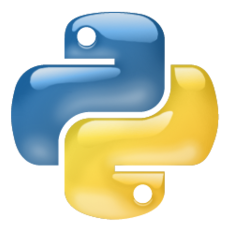本文实例讲述了Python中subprocess模块用法。分享给大家供大家参考。

具体如下: 执行命令: ?
1 2 3 4 | >>> subprocess.call(["ls", "-l"]) 0 >>> subprocess.call("exit 1", shell=True) 1 |
测试调用系统中cmd命令,显示命令执行的结果: ?
1 2 3 | x=subprocess.check_output(["echo", "Hello World!"],shell=True) print(x) "Hello World!" |
测试在python中显示文件内容: ?
1 2 3 4 5 | y=subprocess.check_output(["type", "app2.cpp"],shell=True) print(y) #include <iostream> using namespace std; ...... |
查看ipconfig -all命令的输出,并将将输出保存到文件tmp.log中: ?
1 2 | handle = open(r'd:tmp.log','wt') subprocess.Popen(['ipconfig','-all'], stdout=handle) |
查看网络设置ipconfig -all,保存到变量中: ?
1 2 3 4 5 6 | output = subprocess.Popen(['ipconfig','-all'], stdout=subprocess.PIPE,shell=True) oc=output.communicate()#取出output中的字符串 #communicate() returns a tuple (stdoutdata, stderrdata). print(oc[0]) #打印网络信息 Windows IP Configuration Host Name . . . . . |
我们可以在Popen()建立子进程的时候改变标准输入、标准输出和标准错误,并可以利用subprocess.PIPE将多个子进程的输入和输出连接在一起,构成管道(pipe): ?
1 2 3 4 5 | child1 = subprocess.Popen(["dir","/w"], stdout=subprocess.PIPE,shell=True) child2 = subprocess.Popen(["wc"], stdin=child1.stdout,stdout=subprocess.PIPE,shell=True) out = child2.communicate() print(out) (' 9 24 298n', None) |
如果想频繁地和子线程通信,那么不能使用communicate();因为communicate通信一次之后即关闭了管道.这时可以试试下面的方法: ?
1 2 3 4 5 6 7 8 9 10 11 12 13 14 | p= subprocess.Popen(["wc"], stdin=subprocess.PIPE,stdout=subprocess.PIPE,shell=True) p.stdin.write('your command') p.stdin.flush() #......do something try: #......do something p.stdout.readline() #......do something except: print('IOError') #......do something more p.stdin.write('your other command') p.stdin.flush() #......do something more |
希望本文所述对大家的Python程序设计有所帮助。












 相关攻略
相关攻略
 近期热点
近期热点
 最新攻略
最新攻略